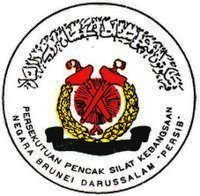Pencak Silat or Silat is predominantly a Southeast Asian martial art with roots in the culture of the Malay World. This art is widely known in Indonesia, Malaysia, Brunei, and Singapore but can also be found in varying degrees among the Malay-affiliated countries of Thailand and the Philippines. The art has also reached Europe, and is especially popular in the Netherlands, where it is as popular as karate is in the United States. It is estimated that there are hundreds of aliran (styles) and thousands of schools.
There are four main aspects to pencak silat:
1. The "Mental-Spiritual" aspect:
Pencak silat aims to build and develop personality and noble character.
2. The "Bela Diri" (self-defence) aspect:
Self-confidence and perseverance are very important.
3. The "Seni Budaya" (culture, art) aspect:
Culture and performing the "art" of pencak silat is very important. This combines Pencak Silat with traditional music and costumes.
4. The "Olahraga" (sport) aspect:
This means that the physical aspect of pencak silat is important. We try to have a sound mind in a sound body. Competitions are part of this aspect. There are full-contact (Pertandingan=Competition) fights, as well as form demonstrations, for one (Tunggal), two (Ganda) or team (Regu) persons.
The styles and schools of pencak silat differ from each other with regard to which aspects are emphasised. It is thanks to the sport and self-defence aspects that this sport has become popular in Europe. However, many believe the essence of Pencak Silat is lost, or watered down, when converted to a sport and therefore still focus on traditional or spiritual forms of Silat, not strictly following the PERSILAT way.
Pencak Silat is a system that consists of sikap-sikap (positions) and gerak-geri (movements). When pesilat (silat practitioners) are moving (when fighting) these sikap and gerak-geri change continuously. As soon as one finds an opening in their opponent's defence, they will try to finish the opponent with a fast serangan (attack).
Pencak Silat has a wide variety of defence and attacking techniques. Practitioners may use hands, elbows, arms, legs, knees and feet in attacks. Common techniques include kicking, hitting, tripping, sweeps, locks, takedowns, throws, strangles, and joint breaking.
The pesilat, or silat practitioner, practices with jurus. A jurus is a series of meta-movements for the upper body used as a guide to learn the applications, or buah when done with a partner. The use of langkah (steps), or lower body meta movements teach the use of footwork. When combined, it is dasar pasang, or whole body flow.
Pencak Silat has developed rapidly during the 20th century and has become a competition sport under the PERSILAT rules and regulations. At the moment Pencak Silat is being promoted by PERSILAT in several countries on all five continents. The goal of PERSILAT is to make Pencak Silat an olympic sport. Apart from the official PERSILAT line of making Pencak Silat a competition sport, there are still many traditional styles practising old forms of Silek and Silat.
PERSILAT (Persekutuan Pencak Silat Antarabangsa, the International Pencak Silat Federation) is promoting Pencak Silat as an international competition sport. Only members recognised by PERSILAT are allowed to participate at international competitions.
At the moment some European national Pencak Silat federations together with PERSILAT have founded a European Pencak Silat Federation.
In 1986 the first Pencak Silat World Championship outside of Asia took place in Vienna, Austria.
In 2002 Pencak Silat was introduced as part of the exhibition programme at the Asian Games in Busan Korea for the first time.
The 13th World Silat Championships took place in Pahang, Malaysia in October 2007 where a total of 26 countries participated.






















